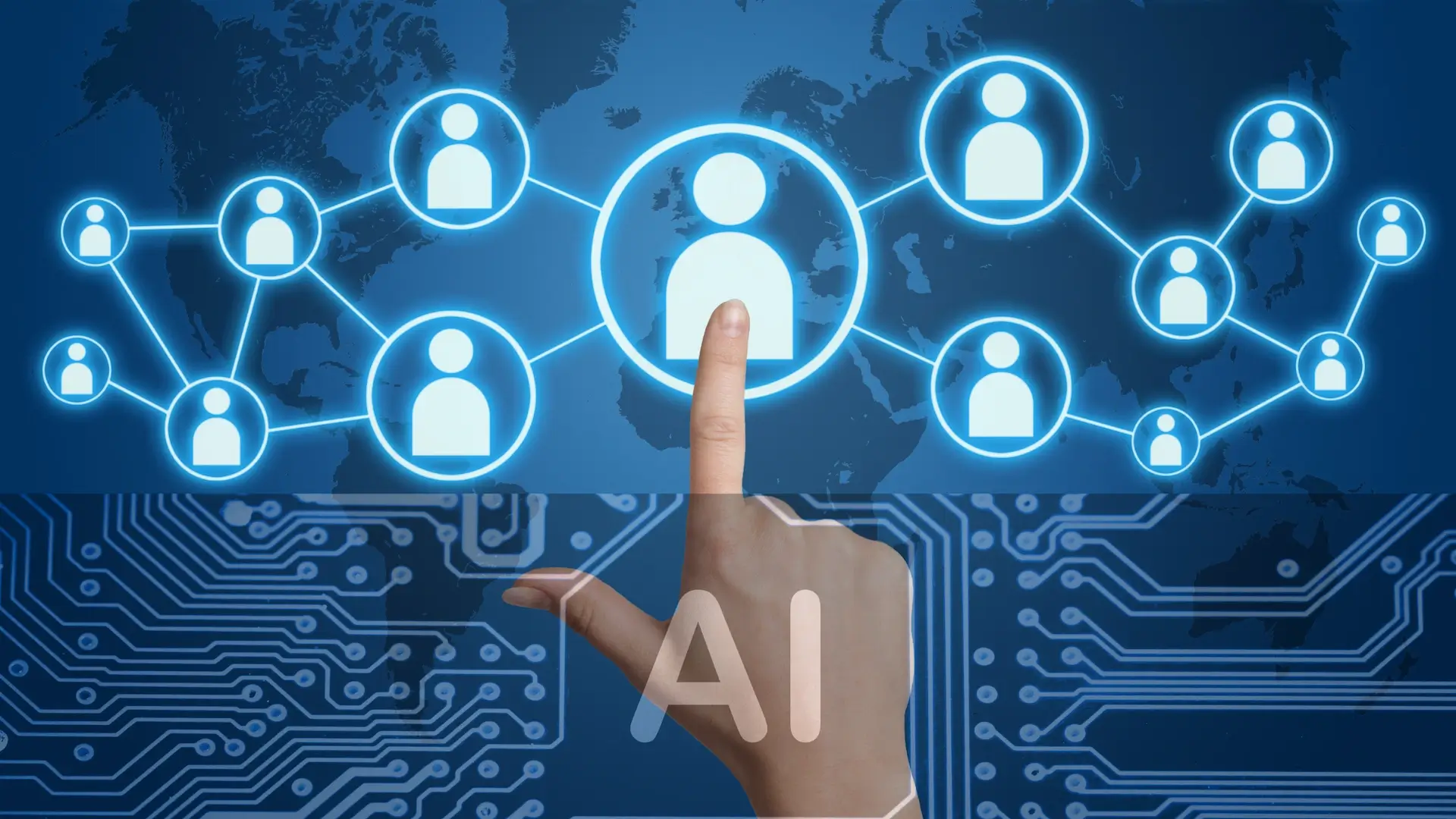Integrating Artificial Intelligence (AI) within contingent workforce management represents a strategic shift, not merely the adoption of new technology. It fundamentally transforms how businesses source, manage, and analyze their non-permanent workforce – freelancers, contractors, and part-time employees. AI goes beyond simply filling open positions; it unlocks a dynamic contingent workforce solution by automating repetitive tasks, mitigating human error in areas like compliance, and offering predictive insights that empower data-driven decisions throughout the entire contingent worker lifecycle – from talent acquisition and project allocation to performance management. This holistic approach yields significant operational efficiencies, strengthens compliance efforts, and ultimately positions your business for a competitive edge in today’s dynamic market.
What is a Contingent Workforce?
A contingent workforce, comprising freelancers, contractors, consultants, and other temporary workers, offers businesses critical flexibility to scale operations as market conditions change. Unlike permanent employees, these workers are engaged on a project basis or for a fixed term, allowing companies to adapt labor resources to meet specific, often fluctuating, business needs. According to recent statistics, the contingent workforce accounts for approximately 20-30% of the workforce in the U.S., with projections suggesting a rise as more companies adopt flexible staffing models.
Utilizing a contingent workforce enables organizations to manage costs effectively by reducing expenditures related to benefits, office space, and long-term salaries. This labor model enhances operational agility, as businesses can quickly onboard specialists to drive innovation or address project-specific challenges without the long-term financial commitment. Integrating skilled contingent workers allows companies to stay competitive by utilizing expertise that may not exist internally, particularly in areas like IT, digital marketing, and project management. To further enhance the efficiency of managing this flexible workforce, companies are integrating Artificial Intelligence (AI) into their workforce strategy to streamline processes from recruitment to performance management.
Understanding the Need for AI in Contingent Workforce Management
Managing a contingent workforce effectively requires agility and precision, which are often difficult to achieve with traditional management methods. This workforce’s variability in workload, diverse compliance needs, and the necessity for rapid scalability present unique challenges. AI technology provides innovative solutions that transform these challenges into opportunities:
- Predictive Analytics for Demand Forecasting: AI leverages deep learning to sift through historical data on project durations, worker performance, and industry-specific trends. By analyzing this information, AI can accurately predict future labor demands, enabling businesses to plan recruitment more proactively. This foresight helps maintain the balance between workforce supply and project demand, ensuring that companies avoid the twin pitfalls of understaffing or excessive payroll costs.
- Automated Compliance Monitoring: With AI, companies can stay ahead of the regulatory curve. AI systems continuously monitor and analyze shifts in labor laws across different regions and sectors—from changes in overtime pay regulations to updates in work visa requirements. This dynamic approach to compliance management not only minimizes the risk of costly legal issues but also protects the organization’s reputation from the negative impacts of non-compliance.
- Sophisticated Algorithms for Optimal Talent Matching: AI enhances the staffing process by utilizing complex algorithms that assess and match contingent workers’ skills and experiences with project-specific needs. This capability extends beyond matching technical skills, incorporating elements like cultural fit and past collaborative successes into the decision-making process. The result is a more cohesive team that is well-equipped to meet project objectives and deliver superior results.
By integrating AI into contingent workforce management, businesses not only streamline operational processes but also enhance their strategic capabilities. This integration allows for greater workforce flexibility, improved efficiency, and compliance adherence, positioning companies to better meet project demands and adapt to changing market conditions.
Step-by-Step Guide to Integrating AI
- Assess Your Current Workforce Management System
Carefully evaluate existing processes for managing contingent workers, focusing on areas such as:
Project assignment
- Candidate vetting
- Onboarding
- Time Keeping
Pinpoint inefficiencies and identify where AI can deliver the most impact, such as automating tasks, improving data accuracy, or streamlining workflows. Utilizing a consulting firm to assist in identifying your business’ need for AI can streamline this process, making it more efficient.
- Choose the Right AI Tools
Selecting the right AI tools is crucial for tailored solutions:
- AI-driven Recruitment Platforms: Utilize platforms like Pymetrics which employ AI to efficiently screen resumes, conduct video interviews, and assess behavioral patterns to predict job fit and performance.
- Automated Onboarding Tools: Employ systems like BambooHR to automate routine onboarding tasks like data collection, document verification, and initial training modules, freeing up HR teams to focus on strategic initiatives.
- Skills Assessment Tools: Integrate platforms like Codility or HackerRank that use AI-powered assessments to evaluate technical skills and programming abilities of potential freelancers or contractors.
- Performance Management Software: Implement tools like Visier, which provide deep analytics on performance trends and workforce productivity across your contingent workforce. This enables proactive management and helps identify areas for improvement or additional training.
3. Train Your Team
To ensure your HR team can fully leverage AI tools, equip them with a comprehensive training program that covers both the technical aspects of operating the AI software and data visualization tools, as well as developing strong analytical skills to interpret data outputs, identify trends, and draw valuable insights to inform effective workforce management decisions. This dual focus empowers them to not only utilize the technology efficiently but also translate the generated data into strategic actions for optimizing your contingent workforce management strategy.
- Implement AI with a Phased Approach
Introduce AI solutions gradually, starting with the most critical areas identified in your assessment. Begin with automating recruitment processes or onboarding tasks to quickly feel the benefits and showcase the value of AI within the organization. Evaluate the effectiveness and adjust your strategy as necessary before extending AI to other areas like performance management or compliance tracking.
- Monitor and Optimize
After integration, continuously monitor the performance of AI systems using specific metrics, such as:
- Time-to-onboarding reductions
- Contingent Worker satisfaction levels
- Project completion rates within budget
Use this data to tweak AI functionalities and optimize your contingent workforce management. Regular feedback loops will help refine AI applications and ensure they remain aligned with business objectives.
- Ensure Compliance and Ethical Standards
It’s vital to ensure that your AI implementations comply with all relevant employment laws and data privacy regulations, such as GDPR and CCPA. Regularly update AI algorithms to reflect changes in legislation and conduct audits to prevent any biases or ethical issues in automated processes. Maintaining high ethical standards in AI applications not only protects the company legally but also supports fair and equitable treatment of all workers, both full-time and contingent.
The Future of Work is Powered by AI
Integrating AI into contingent workforce management transforms traditional practices, making them more efficient, compliant, and strategically focused. Businesses that adopt AI in managing their non-permanent staff stand to gain significant competitive advantages through improved operational efficiencies and enhanced decision-making capabilities.
Unlock the Full Potential of Your Workforce
While this guide provides a roadmap for integrating AI, consider partnering with a reputable AI consulting firm like WG Consulting. Our team of experts can assist you throughout the entire process, from:
- AI Needs Assessment: We’ll work with you to analyze your current contingent workforce management system and identify areas where AI can deliver the most value.
- AI Tool Selection: We’ll help you navigate the ever-evolving AI landscape and select the right tools that align with your specific needs and budget.
- Implementation and Training: Our team will oversee the seamless integration of AI solutions and provide comprehensive training for your HR team to ensure they can effectively utilize the new technology.
- Ongoing Support and Optimization: We’ll provide ongoing support to monitor the performance of your AI systems, identify areas for improvement, and help you refine your strategy to maximize the benefits of AI in your contingent workforce management.
Take the First Step Today
Contact WG Consulting today to schedule a free consultation and discuss how we can transform your contingent workforce management strategy. Let us help you optimize the full potential of your non-permanent workforce and gain a competitive edge in today’s dynamic marke

